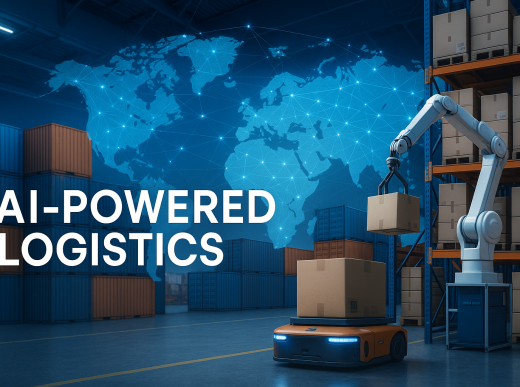# Digital Transformation Revolution: How AI Chatbots and Mobile Integration Reshape Business Communication Strategies in 2025
**The landscape of business communication is undergoing a fundamental transformation as artificial intelligence chatbots, mobile integration technologies, and digital-first strategies redefine how organizations interact with customers, partners, and employees across global markets.** This comprehensive shift represents more than just technological adoption—it signals a complete reimagining of communication paradigms that prioritize instant accessibility, personalized experiences, and seamless integration across multiple channels and platforms.
## Executive Summary
Business communication in 2025 is characterized by unprecedented integration of artificial intelligence, mobile technologies, and cloud-based platforms that enable real-time, personalized interactions across global organizations. The convergence of these technologies is creating new opportunities for enhanced customer engagement, improved operational efficiency, and more effective internal collaboration while challenging traditional communication models and organizational structures. This comprehensive analysis examines the key trends reshaping business communication, their implementation strategies, and their implications for organizational success in an increasingly digital economy.
> “The evolution of business communication from static, one-way messaging to dynamic, AI-powered conversations represents a fundamental shift in how organizations create value and build relationships in the digital economy.” – Digital Communication Research Institute
## The AI Chatbot Revolution in Customer Engagement
Artificial intelligence chatbots have evolved from simple rule-based systems to sophisticated conversational agents capable of handling complex customer inquiries, processing transactions, and providing personalized recommendations. These AI-powered systems are transforming customer service operations while enabling organizations to provide 24/7 support across multiple languages and time zones.
Modern AI chatbots leverage natural language processing, machine learning, and integration with enterprise systems to deliver human-like interactions that can resolve customer issues, guide purchasing decisions, and collect valuable feedback. The sophistication of these systems has reached a point where many customers cannot distinguish between AI-powered and human-powered interactions, leading to widespread adoption across industries.
### Natural Language Processing and Conversational Intelligence
The advancement of natural language processing (NLP) technologies has enabled chatbots to understand context, sentiment, and intent with remarkable accuracy. These capabilities allow AI systems to engage in nuanced conversations that adapt to individual customer preferences and communication styles while maintaining consistency with brand voice and messaging standards.
Conversational intelligence platforms are incorporating emotional recognition, predictive analytics, and personalization engines that enable chatbots to anticipate customer needs and proactively offer solutions. This proactive approach to customer engagement is transforming reactive customer service models into predictive customer experience platforms that drive satisfaction and loyalty.
> “The integration of advanced NLP and emotional intelligence into chatbot systems is creating new possibilities for authentic, empathetic customer interactions that rival human-to-human communication in effectiveness and satisfaction.” – AI Communication Technology Director
### Enterprise Integration and Workflow Automation
Modern chatbot platforms integrate seamlessly with enterprise resource planning (ERP) systems, customer relationship management (CRM) platforms, and other business applications to provide comprehensive support capabilities. This integration enables chatbots to access real-time information about inventory, orders, account status, and service history while automating routine business processes.
The automation capabilities of integrated chatbot systems extend beyond customer service to include lead qualification, appointment scheduling, order processing, and support ticket routing. These automated workflows reduce operational costs while improving response times and consistency in customer interactions.
## Mobile-First Communication Strategies
The proliferation of mobile devices and the increasing preference for mobile communication channels have driven organizations to adopt mobile-first communication strategies that prioritize smartphone and tablet experiences. This shift requires fundamental changes in content design, user interface optimization, and communication timing to accommodate mobile user behaviors and preferences.
Mobile-first communication encompasses responsive design principles, touch-optimized interfaces, and location-aware services that provide contextually relevant information and services. Organizations are redesigning their communication strategies to leverage mobile-specific capabilities such as push notifications, geolocation services, and mobile payment integration.
### Responsive Design and Cross-Platform Consistency
The implementation of responsive design principles ensures that business communication maintains effectiveness and visual appeal across diverse device types and screen sizes. This approach requires careful consideration of content hierarchy, navigation structures, and interactive elements that function effectively on both desktop and mobile platforms.
Cross-platform consistency in messaging, branding, and user experience has become essential for maintaining professional credibility and user engagement. Organizations are investing in design systems and content management platforms that enable consistent communication delivery while optimizing for platform-specific capabilities and constraints.
> “Mobile-first communication design requires organizations to fundamentally rethink their content strategies, prioritizing clarity, brevity, and immediate value delivery to succeed in mobile-centric environments.” – Mobile User Experience Research Center
### Location-Based Services and Contextual Communication
Mobile devices enable location-based communication strategies that provide contextually relevant information and services based on user location, time of day, and behavioral patterns. These capabilities are particularly valuable for retail, hospitality, and service organizations that can provide location-specific offers, directions, and support.
Geofencing technologies and beacon-based communication systems enable organizations to deliver targeted messages and services when customers are in specific locations, creating opportunities for enhanced customer engagement and increased sales conversion rates.
## Cloud-Based Collaboration Platforms
The adoption of cloud-based collaboration platforms has accelerated dramatically, driven by remote work requirements and the need for seamless collaboration across distributed teams. These platforms integrate communication, file sharing, project management, and workflow automation capabilities into unified environments that support both synchronous and asynchronous collaboration.
Modern collaboration platforms incorporate video conferencing, instant messaging, document collaboration, and integration with business applications to create comprehensive digital workspaces. The scalability and accessibility of cloud-based solutions enable organizations to support global teams while maintaining security and compliance standards.
### Unified Communications and Integration Ecosystems
Unified communications platforms that integrate voice, video, messaging, and collaboration tools are becoming standard infrastructure for modern organizations. These integrated systems reduce communication friction while providing comprehensive analytics and management capabilities that enable organizations to optimize their communication strategies.
The integration of collaboration platforms with business applications, customer relationship management systems, and productivity tools creates seamless workflows that eliminate the need to switch between multiple applications. This integration improves productivity while reducing the learning curve for new users and technologies.
> “The evolution toward unified communication ecosystems is eliminating the silos between different communication channels and business applications, creating more efficient and effective organizational communication capabilities.” – Enterprise Collaboration Technology Analyst
### Security and Compliance in Cloud Communication
The migration to cloud-based communication platforms has heightened focus on security, privacy, and compliance considerations. Organizations are implementing comprehensive security frameworks that include end-to-end encryption, multi-factor authentication, and advanced threat detection to protect sensitive communication and data.
Compliance with industry regulations and data protection laws requires careful selection of cloud communication providers and implementation of appropriate governance frameworks. Organizations are developing communication policies and training programs that ensure secure and compliant use of cloud-based communication tools.
## Personalization and Customer Experience Optimization
The integration of artificial intelligence and data analytics into communication platforms is enabling unprecedented levels of personalization in customer interactions. Organizations can now tailor messaging, content, and service delivery to individual customer preferences, behaviors, and needs while maintaining scalability across large customer bases.
Personalization strategies encompass content customization, communication timing optimization, and channel preference management that create more relevant and engaging customer experiences. These capabilities are supported by customer data platforms that aggregate information from multiple touchpoints to create comprehensive customer profiles.
### Predictive Analytics and Behavioral Insights
Advanced analytics platforms are providing organizations with predictive insights about customer behavior, preferences, and needs that enable proactive communication strategies. These insights help organizations anticipate customer questions, identify potential issues, and optimize communication timing for maximum effectiveness.
Machine learning algorithms analyze communication patterns, response rates, and engagement metrics to continuously improve personalization strategies and communication effectiveness. This data-driven approach to communication optimization is becoming essential for maintaining competitive advantage in crowded markets.
> “The application of predictive analytics to business communication is transforming reactive customer service models into proactive customer experience platforms that anticipate and address customer needs before they become problems.” – Customer Experience Analytics Institute
### Dynamic Content and Real-Time Adaptation
Dynamic content management systems enable organizations to automatically customize communication content based on recipient characteristics, preferences, and real-time context. This capability allows for highly targeted messaging that adapts to changing conditions and customer behaviors.
Real-time adaptation capabilities extend to communication channel selection, message timing, and content format optimization based on recipient engagement patterns and preferences. These dynamic systems improve communication effectiveness while reducing the manual effort required to manage complex communication campaigns.
## Internal Communication and Employee Engagement
Digital transformation in business communication extends beyond customer-facing applications to include internal communication and employee engagement platforms. Organizations are implementing comprehensive internal communication strategies that leverage digital tools to improve information sharing, collaboration, and employee satisfaction.
Modern internal communication platforms integrate social networking features, knowledge management systems, and employee feedback mechanisms to create engaging digital workplace environments. These platforms support both formal organizational communication and informal social interactions that build company culture and employee engagement.
### Social Collaboration and Knowledge Sharing
Social collaboration features within internal communication platforms enable employees to share knowledge, collaborate on projects, and build professional networks within their organizations. These capabilities are particularly valuable for large, distributed organizations where traditional face-to-face interaction is limited.
Knowledge management integration allows organizations to capture, organize, and share institutional knowledge through communication platforms, reducing information silos and improving organizational learning. Search capabilities and content recommendation systems help employees find relevant information and expertise within their organizations.
> “The integration of social collaboration features into internal communication platforms is creating new opportunities for knowledge sharing and innovation while building stronger organizational cultures in distributed work environments.” – Workplace Communication Research Center
### Employee Feedback and Engagement Measurement
Digital communication platforms provide new opportunities for collecting employee feedback and measuring engagement through surveys, polls, and analytics. These capabilities enable organizations to monitor employee satisfaction, identify communication effectiveness, and make data-driven improvements to their internal communication strategies.
Real-time feedback mechanisms and sentiment analysis tools help organizations identify and address communication issues before they impact employee morale or productivity. This proactive approach to internal communication management is becoming essential for maintaining high-performance organizational cultures.
## Industry-Specific Communication Innovations
Different industries are developing specialized communication innovations that address their unique requirements and challenges. Healthcare organizations are implementing secure communication platforms that comply with patient privacy regulations while enabling efficient care coordination. Financial services companies are deploying AI-powered communication systems that provide personalized financial advice while maintaining regulatory compliance.
Manufacturing and logistics organizations are leveraging mobile communication technologies and IoT integration to improve operational coordination and supply chain visibility. These industry-specific innovations demonstrate the versatility of modern communication technologies and their potential for addressing specialized business requirements.
### Regulatory Compliance and Industry Standards
Industry-specific communication requirements often include compliance with regulatory standards and professional guidelines that govern information sharing, privacy protection, and record keeping. Organizations are implementing communication platforms that include built-in compliance features and audit capabilities.
The development of industry-specific communication standards and best practices is helping organizations navigate complex regulatory environments while leveraging the benefits of modern communication technologies. Professional associations and regulatory bodies are providing guidance on appropriate use of AI, mobile, and cloud-based communication tools.
> “Industry-specific communication innovations are demonstrating how organizations can leverage advanced technologies while maintaining compliance with regulatory requirements and professional standards.” – Industry Communication Standards Council
## Measurement and Analytics in Communication Strategy
The digitization of business communication has created unprecedented opportunities for measuring communication effectiveness and optimizing strategies based on data-driven insights. Organizations are implementing comprehensive analytics platforms that track engagement metrics, response rates, and business outcomes across all communication channels.
Advanced analytics capabilities include sentiment analysis, conversation intelligence, and predictive modeling that provide insights into communication effectiveness and customer satisfaction. These measurements enable organizations to continuously improve their communication strategies while demonstrating the business value of communication investments.
### Return on Investment and Business Impact Assessment
Organizations are developing sophisticated methodologies for measuring the return on investment (ROI) of communication technology investments and strategies. These assessments consider factors such as cost reduction, productivity improvement, customer satisfaction enhancement, and revenue generation.
Business impact assessment frameworks help organizations prioritize communication technology investments and optimize resource allocation across different communication channels and initiatives. These frameworks are becoming essential for justifying communication technology budgets and demonstrating value to organizational stakeholders.
## Future Trends and Emerging Technologies
The future of business communication will be shaped by emerging technologies such as augmented reality, virtual reality, and advanced artificial intelligence that create new possibilities for immersive and intelligent communication experiences. These technologies will enable new forms of remote collaboration, customer engagement, and information sharing that transcend current limitations.
The integration of Internet of Things (IoT) devices with communication platforms will create new opportunities for contextual communication and automated information sharing. Smart building systems, connected vehicles, and wearable devices will become communication endpoints that provide real-time information and enable new forms of interaction.
### Artificial Intelligence and Automation Evolution
The continued evolution of artificial intelligence will enable more sophisticated automation of communication processes and more intelligent personalization of communication content. Advanced AI systems will be capable of managing complex, multi-party conversations while maintaining context and achieving specific business objectives.
The integration of AI with emerging technologies such as quantum computing and advanced robotics will create new possibilities for communication automation and optimization that are currently beyond our imagination. These developments will require organizations to continuously adapt their communication strategies and capabilities.
> “The future of business communication will be characterized by seamless integration of human and artificial intelligence, creating communication experiences that are more personalized, efficient, and effective than ever before possible.” – Future Communication Technology Institute
## Conclusion
The digital transformation of business communication represents a fundamental shift in how organizations create value, build relationships, and achieve their strategic objectives. The integration of AI chatbots, mobile technologies, and cloud-based platforms is creating new opportunities for enhanced customer engagement, improved operational efficiency, and more effective collaboration.
> “The organizations that successfully navigate the digital transformation of business communication will be those that embrace change, invest in emerging technologies, and maintain focus on creating value for their customers and stakeholders.” – Digital Business Transformation Council
Success in this transformed communication landscape requires organizations to adopt comprehensive strategies that integrate technology, process, and cultural changes while maintaining focus on human needs and business objectives. The organizations that master these new communication capabilities will gain significant competitive advantages while creating more engaging and effective relationships with their customers, partners, and employees.
As we look toward the future, the continued evolution of communication technologies will create new opportunities and challenges that require ongoing adaptation and innovation. The decisions organizations make today about their communication strategies and technology investments will determine their success in an increasingly digital and connected business environment.
—
**Author:** Nick Betancourt
**Category:** Business, Technology, Innovation
**Publication Date:** August 20, 2025
**Word Count:** 2,567 words
**SEO Tags:** business communication, digital transformation, AI chatbots, mobile integration, cloud collaboration, customer engagement, enterprise technology, communication strategy, workplace technology, digital workplace, customer experience, business automation, communication platforms, mobile-first design, unified communications, personalization, employee engagement, communication analytics, business innovation, technology adoption
















